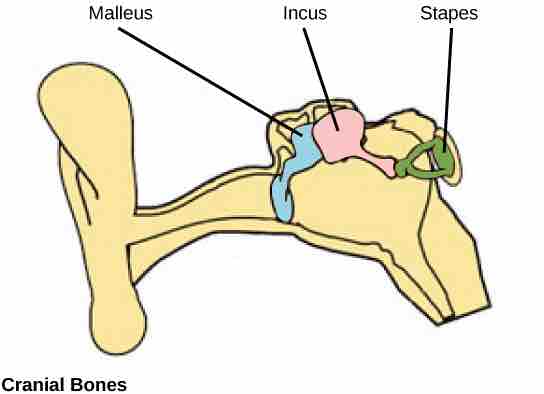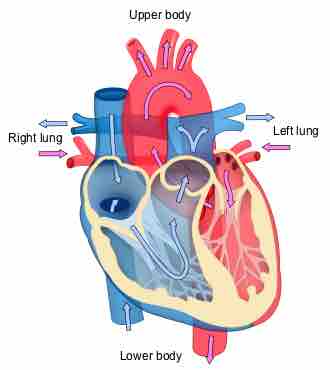Characteristics of Mammals
The presence of hair is one of the most obvious traits of a mammal. Although it is not very extensive on certain species, such as whales, hair has many important functions for mammals. Mammals are endothermic so hair provides insulation to retain heat generated by metabolic work by trapping a layer of air close to the body . Along with insulation, hair can serve as a sensory mechanism via specialized hairs called vibrissae, better known as whiskers. These attach to nerves that transmit information about sensation, which is particularly useful to nocturnal or burrowing mammals. Hair can also provide protective coloration or be part of social signaling, such as when an animal's hair stands "on end. "
Mammalian fur as insulation
Polar bears use their fur for warmth. While their skin is black, their transparent fur appears white, providing camouflage while hunting and serving as protection by hiding cubs in the snow.
Mammalian integument, or skin, includes secretory glands with various functions. Sebaceous glands produce a lipid mixture called sebum that is secreted onto the hair and skin for water resistance and lubrication. Sebaceous glands are located over most of the body. Eccrine glands produce sweat, or perspiration, which is mainly composed of water. In most mammals, eccrine glands are limited to certain areas of the body; some mammals do not possess them at all. However, in primates, especially humans, sweat figures prominently in thermoregulation, regulating the body through evaporative cooling. Sweat glands are located over most of the body surface in primates. Apocrine glands, or scent glands, secrete substances that are used for chemical communication, such as in skunks. Mammary glands produce milk that is used to feed newborns. While male monotremes and eutherians possess mammary glands, male marsupials do not. Mammary glands are probably modified sebaceous or eccrine glands, but their evolutionary origin is not entirely clear.
The skeletal system of mammals possesses many unique features. The lower jaw of mammals consists of only one bone, the dentary. The jaws of other vertebrates are composed of more than one bone. In mammals, the dentary bone joins the skull at the squamosal bone, while in other vertebrates, the quadrate bone of the jaw joins with the articular bone of the skull. These bones are present in mammals, but they have been modified to function in hearing and form bones in the middle ear . Other vertebrates possess only one middle ear bone, the stapes. Mammals have three: the malleus, incus, and stapes. The malleus originated from the articular bone, whereas the incus originated from the quadrate bone. This arrangement of jaw and ear bones aids in distinguishing fossil mammals from fossils of other synapsids.

Bones of the mammalian inner ear
Bones of the mammalian inner ear are modified from bones of the jaw and skull.
The adductor muscle that closes the jaw is composed of two muscles in mammals: the temporalis and the masseter. These allow side-to-side movement of the jaw, making chewing possible, which is unique to mammals. Most mammals have heterodont teeth, meaning that they have different types and shapes of teeth rather than just one type and shape of tooth. Most mammals are diphyodonts, meaning that they have two sets of teeth in their lifetime: deciduous, or "baby" teeth, and permanent teeth. Other vertebrates are polyphyodonts: their teeth are replaced throughout their entire life.
Mammals, like birds, possess a four-chambered heart . Mammals also have a specialized group of cardiac fibers located in the walls of their right atrium called the sinoatrial node, or pacemaker, which determines the rate at which the heart beats. As for blood, mammalian erythrocytes (red blood cells) do not have nuclei, whereas the erythrocytes of other vertebrates are nucleated.

Mammalian heart
Mammals possess a four-chambered heart, with two atria and two ventricles, that circulates blood through the body.
The kidneys of mammals have a portion of the nephron called the loop of Henle or nephritic loop, which allows mammals to produce urine with a high concentration of solutes; higher than that of the blood. Mammals lack a renal portal system: a system of veins that moves blood from the hind or lower limbs and region of the tail to the kidneys. Renal portal systems are present in all other vertebrates except jawless fishes. A urinary bladder is present in all mammals.
Mammalian brains have certain characteristics that differ from other vertebrates. In some, but not all mammals, the cerebral cortex, the outermost part of the cerebrum, is highly folded, allowing for a greater surface area than is possible with a smooth cortex. The optic lobes, located in the midbrain, are divided into two parts in mammals, whereas other vertebrates possess a single, undivided lobe. Eutherian mammals also possess a specialized structure that links the two cerebral hemispheres, called the corpus callosum.